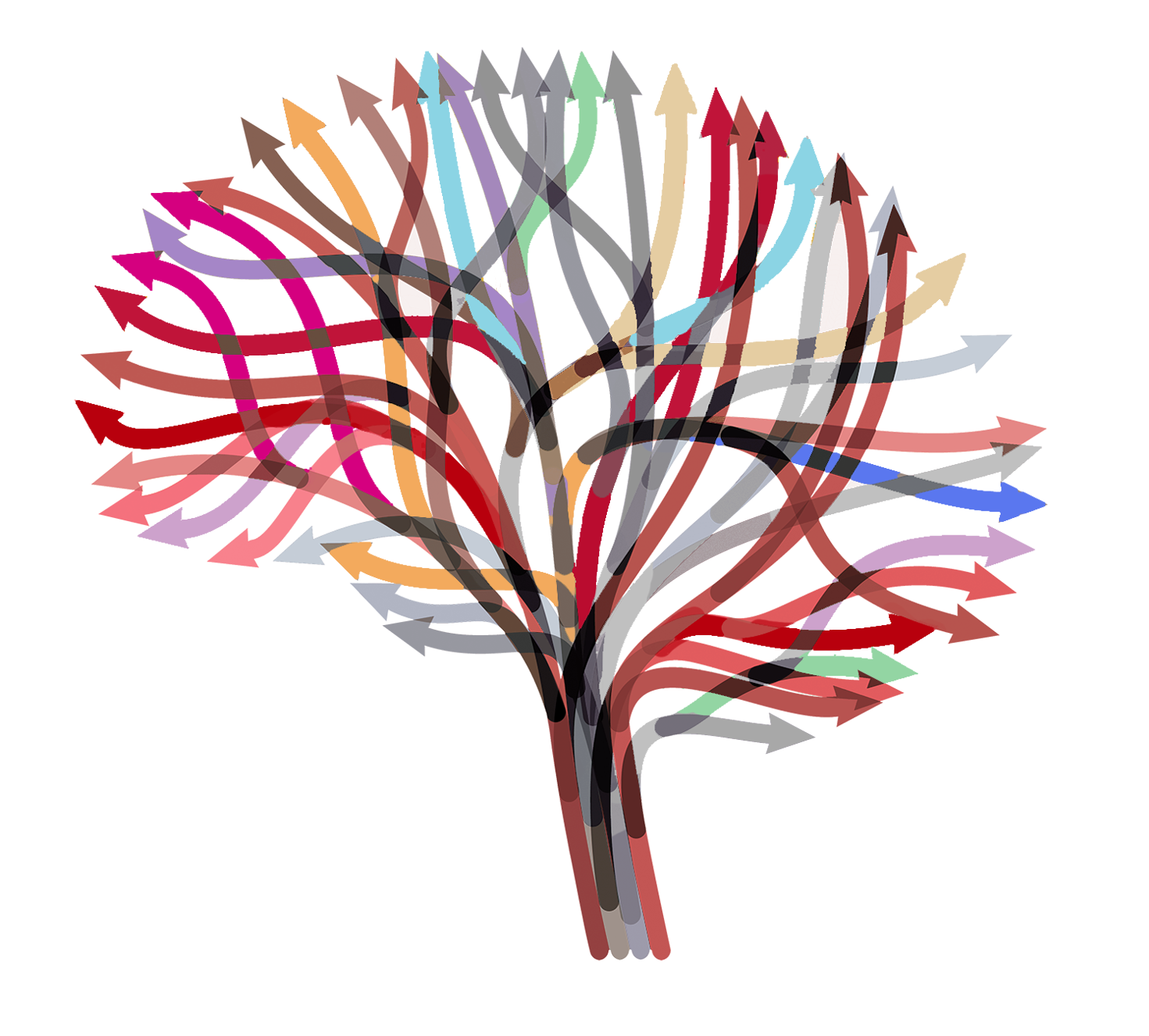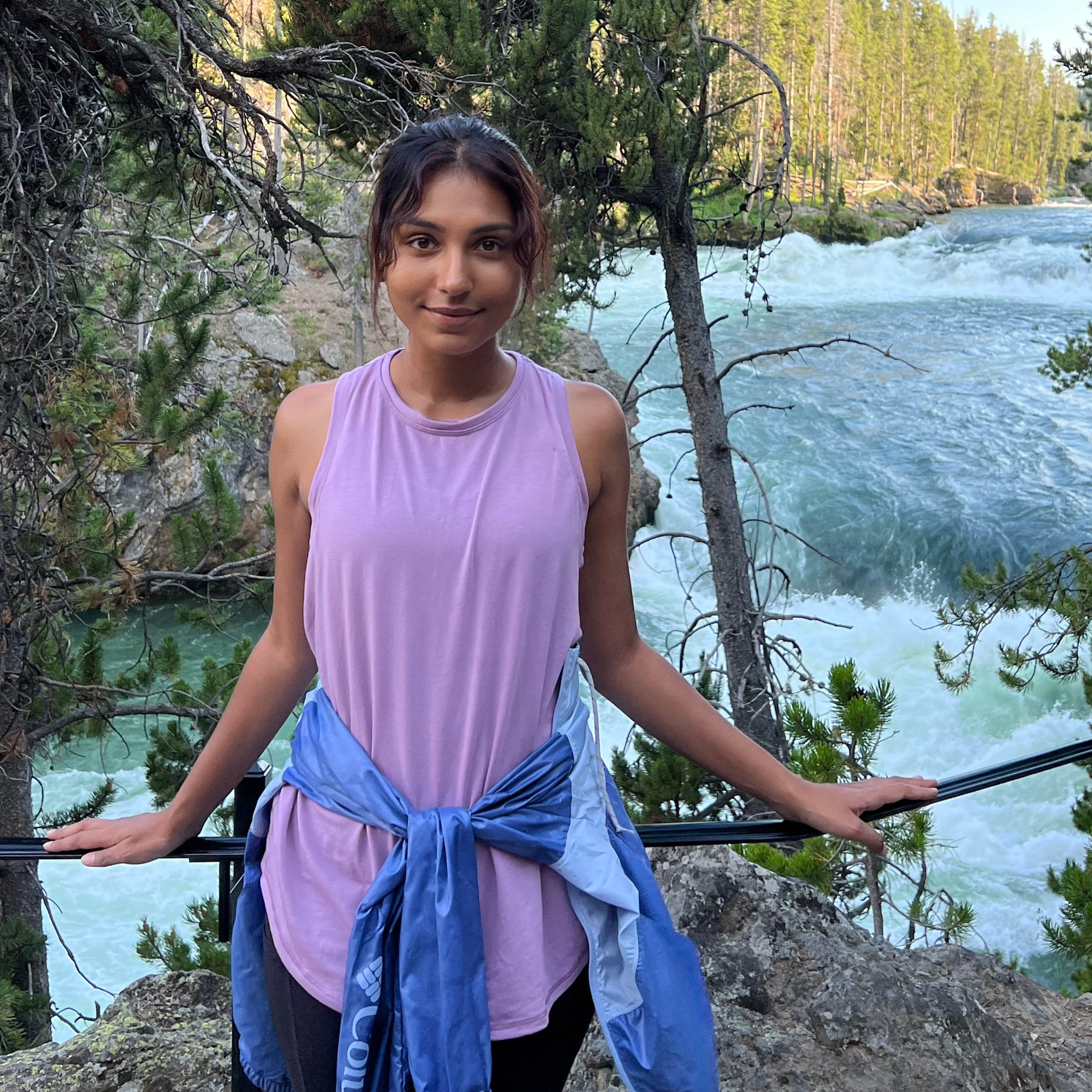


This is the home website of the Cognition & Decision Modeling Laboratory in the Department of Psychology at The Ohio State University. The lab is directed by Dr. Peter Kvam (Principal Investigator), and investigates topics related to decision making, judgments, machine learning / artificial intelligence, and cognitive modeling.
We are potentially accepting new graduate students for the Fall 2026 admission cycle! Information on OSU Psychology admissions can be found here: Link

Peter is a faculty member in the Department of Psychology at The Ohio State University. His research interests include judgment and decision-making, cognitive modeling, and new methods for studying psychology and cognitive processes like machine learning and artificial intelligence. Current projects include decisions in dynamic environments, disordered decision making in substance dependent individuals, multi-alternative decisions, continuous ratings, pricing, and computational methods.





Our work pursues an understanding of cognitive and neural processes, especially those related to decision-making. As part of this effort, we develop computational models and other tools that can be applied to a variety of problems spanning topic areas in psychology and other sciences.
Approaching problems from a mathematical and statistical understanding of behavior allows us to construct more complete models of cognition, leveraging different sources of data to gain insight into shared underlying processes. As such, our research is often interdisciplinary, involving tools and collaborators from other areas like economics, biology, computer science, physics, and statistics.

Despite the prevalence of multi-alternative and continuous selection tasks in the real world – pricing, spatial navigation, confidence, numerosity, estimation tasks – models of the decision process have focused primarily on selections between 2-3 alternatives. Much of our cognitive modeling work has striven to extend both our theoretical and empirical understanding of decisions that offer many possible response alternatives. Our previous and ongoing work investigates and models phenomena in perception as well as higher-level cognitive processes, including judgments of color, orientation, magnitude, price, timing, and confidence.
One of the most interesting (and frustrating!) aspects of multi-alternative and continuous responses is the importance of similarity: how does support for one option affect support for others? Similar options share support (if deciding between drinks, we may also like Pepsi if we like Coke), and dissimilar options fight over support (if we want a car with good gas mileage, that provides support for a hybrid and support against a gas guzzler). Understanding how these similarities in our psychological representations of choice options affect decision making is a key part of understanding human decision making in general.
Kvam, P. D., Marley, A. A. J., & Heathcote, A. (2023). A unified theory of discrete and continuous responding. Psychological Review 130(2), 368-400. Link, PDF Preprint
Kvam, P. D. & Turner, B. M. (2021). Reconciling similarity across models of continuous selections. Psychological Review 128 (4), 766-786. Link, PDF Preprint
Kvam, P. D. & Busemeyer, J. R. (2020). A distributional and dynamic theory of pricing and preference. Psychological Review 127 (6), 1053-1078. Link, PDF
Reynolds, A., Garton, R., Kvam, P. D., Sauer, J. D., Osth, A., & Heathcote, A. (2021). A dynamic model of deciding not to choose. Journal of Experimental Psychology: General 150 (1), 42-66. Link, PDF
Reynolds, A., Kvam, P. D., Osth, A. F., \& Heathcote, A. (2020). Correlated racing evidence accumulator models.Journal of Mathematical Psychology 96, 102331. Link
Kvam, P. D. (2019). Modeling accuracy, response time, and bias in continuous orientation judgments. Journal of Experimental Psychology: Human Perception and Performance, 45 (3), 301-318. Link, PDF
Kvam, P. D. (2019). A geometric framework for modeling dynamic decisions among arbitrarily many alternatives. Journal of Mathematical Psychology, 91, 14-37. Link, PDF

A great deal of thought and work has gone into understanding how we make decisions -- what information we consider, how we search for relevant information, when we stop and decide. Each of these is affected by what our goals are: do we want to pick A>B or B>A? Or do we want to rate each option we have in terms of how much we like them? The patterns of behavior we observe in either situation can diverge wildly, and indeed the desire to make up our mind (especially on political issues) can lead us to consider extreme information and form polarized views of the world. Our reseach on choice goals examines how decision strategies drive people to become polarized on new issues, how extremists are created, and potential strategies for reducing polarization & extremism.
Of course, behavior doesn't end with a decision either. Once we decide, we have to follow up on it and experience the consequences. The mere fact that we have made a decision can affect how we think about our world, what we learn and remember, and how we act in subsequent choice scenarios. Much of our work examines what happens after a choice is made -- what do we learn from the consequences (reinforcement learning), what information do we remember and share with others (social networks), and how does choice determine the course of later changes in beliefs and preferences (dynamic decision making).
Kvam, P. D., Alaukik, A., Mims, C. E., Martemyanova, A., & Baldwin, M. (2022). Rational inference strategies and the genesis of polarization and extremism. Scientific reports, 12(1), 1-13. Link
Kvam, P. D., Busemeyer, J. R., & Pleskac, T. (2021). Temporal oscillations in preference strength provide evidence for an open system model of constructed preference. Scientific reports, 11(1), 1-15. Link
Busemeyer, J. R.*, Kvam, P. D.*, & Pleskac, T. J.* (2020). Comparison of quantum versus Markov dynamics for modeling human evidence accumulation. WIREs Cognitive Science, 11(4), e1526. [*all authors contributed equally to this work] Link
Kvam, P.D. & Pleskac, T.J. (2017). A quantum information architecture for cue-based heuristics. Decision,, Online early access. Link, PDF
Kvam, P.D. & Pleskac, T.J. (2016). Strength and weight: The determinants of choice and confidence. Cognition, 52, 170--180. Link, PDF
Kvam, P.D., Pleskac, T.J., Yu, S., & Busemeyer, J R. (2015). Interference effects of choice on confidence: Quantum characteristics of evidence accumulation. Proceedings of the National Academy of Sciences, 112(34), 10645--10650. Link, PDF

Our work seeks to go beyond simply describing behavior and instead venture into why people behave how they do. To do this, we develop models of what we think is going on in the mind / brain, quantifying what we observe (choices, judgments, neural activity) in terms of processes like learning, attention, information search, and changes in beliefs and preferences. Comparing different models and the diverging predictions they make allows us to come up with the best explanations we can for human behavior.
This approach to studying psychology demands rigorous statistical and computational tools. Much of what we do involves developing better models, better tools for creating and fitting models, or model-based ways to put different sources of data together. The model-based measures we develop are more reliable than simple summaries of behavior (such as accuracy, choice proportions, mean response times) and help us connect the behavior we observe in the laboratory to important outcomes like substance use, mental health, and disordered decision making. We think the results are worth the trouble!
Kvam, P. D., Irving, L. H., Sokratous, K., & Smith, C. T. (2024). Improving the reliability and validity of the IAT with a dynamic model driven by similarity. Behavior Research Methods 56, 2158-2193. Link
Haines, N., Kvam, P. D., & Turner, B. M. (2023). Explaining the description-experience gap in risky decision-making: learning and memory retention during experience as causal mechanisms. Cognitive, Affective, & Behavioral Neuroscience 23, 557-577. Link
Sokratous, K., Fitch, A. K., & Kvam, P. D. (2023). How to ask twenty questions and win: Machine learning tools for assessing preferences from small samples of willingness-to-pay prices. Journal of Choice Modeling, 48, 100418. Link
Kvam, P. D., Romeu, R. J., Turner, B. M., Vassileva, J., & Busemeyer, J. R. (2021). Testing the factor structure underlying behavior using joint cognitive models: Impulsivity in delay discounting and Cambridge gambling tasks. Psychological Methods, 26(1), 18-37. Link, PDF
Haines, N., Kvam, P. D., Irving, L., Smith, C. T., Beauchaine, T. P., Pitt, M. A., Ahn, W-Y., & Turner, B. M. (2020). Learning from the reliability paradox: How theoretically informed generative models can advance the social, behavioral, and brain sciences. Preprint.
Molloy, M. F., Romeu, R. J., Kvam, P. D., Finn, P. M., Busemeyer, J. R., & Turner, B. M. (2020). Hierarchical Bayesian methods to correct estimation errors in hyperbolic discounting models of intertemporal choice. Decision 7(3), 212-224.Link, PDF
Rahnev, D., Desender, K., Lee, A. L. F., Adler, W. T., ..., Kvam, P. D., et al. (2020). The confidence database. Nature Human Behaviour, 4(3), 317--325. Link

A critical consideration when implementing models of cognition is whether a proposed explanation is plausible given what we know about human physiology and ancestry. We know that the nervous system is composed of neural circuitry that has evolved over generations as well as shifted over lifetimes with new learning. Connectionist networks and evolutionary algorithms allow researchers to explore how particular models might be instantiated in the brain. Studying these models lets us study the neural mechanisms we think underlie behavior, and test whether different theories are plausble in light of what we know about the structure and organization of the brain.
The increasing prevalence of artificial intelligence also offers the opportunity to develop new tools for studying psychology and cognition. We are currently using deep neural networks to develop more accessible tools for model fitting, Gaussian processes to model relationships between spatially and temporally correlated outcomes, agent-based models to understand social dynamics, genetic algorithms to model the evolution of cognitive capacities like working memory, and natural language processing to understand the similarities in psychological representation between different concepts. Each of these approaches leverages a different type of AI, but all of them promise to expand our understanding of human cognition.
Kvam, P. D., Sokratous, K., Fitch, A. K., & Hintze, A. (in press). Using artificial intelligence to fit, compare, evaluate, and discover models of decision behavior. Decision. Preprint.
Sokratous, K., Fitch, A. K., & Kvam, P. D. (2023). How to ask twenty questions and win: Machine learning tools for assessing preferences from small samples of willingness-to-pay prices. Journal of Choice Modeling, 48, 100418. Link
Kvam, P. D., Hintze, A., Pleskac, T. J., & Pietraszewski, D. (2019). Computational Evolution and Ecologically Rational Decision Making. In R. Hertwig, T.J. Pleskac, T. Pachur, & The Center for Adaptive Rationality, Taming Uncertainty. MIT Press.
Kvam, P. D. & Hintze, A. (2018). Rewards, risks, and reaching the right strategy: Evolutionary paths from heuristics to optimal decisions. Evolutionary Behavioral Sciences, 12(3), 177--190.
Busemeyer, J. R., Fakhari, P., & Kvam, P. D. (2017). Neural implementation of operations used in quantum cognition. Progress in Biophysics and Molecular Biology, 130, 53-60.Link, PDF
Hintze, A., Edlund, J. A., Olson, R. A., Knoester, D. B., Schossau, J., ..., Kvam, P. D., ..., & Adami, C. (2017). Markov Brains: A Technical Introduction. Technical report, arXiv:1709.05601 [cs.AI].
Kvam, P. D., Cesario, J., Schossau, J., Eisthen, H., & Hintze, A. (2015) Computational evolution of decision-making strategies. In D.C. Noelle, R. Dale, A.S. Warlaumont, J. Yoshimi, T. Matlock, C.D. Jennings, & P.P. Maglio (Eds.), Proceedings of the 37th Annual Meeting of the Cognitive Science Society (pp. 1225--1230). Austin, TX: Cognitive Science Society. Link, PDF
Class descriptions and resources for classes are posted below.
STUDENTS:
If you have any questions that aren't answered here, feel free to email me at pkvam@ufl.edu. Make sure to include the
title of your class (e.g. "PSY395") in the subject of your email to make sure
that your message doesn't get lost in my spam folder or anything.
This course explores how people make decisions and how we study the psychological processes underlying their choices and judgments. The first part of the course will cover traditional theories of choice and how we “should” make decisions and judgments, as well as the mental shortcuts (heuristics) and biases that lead us astray. The second part will examine how we use social and affective information and learn to make better choices over time, considering many factors in order to satisfy our preferences and achieve our desired outcomes. The final part of the course will examine the neural underpinnings of decision processes as well as disordered decisions and judgments arising from brain damage or clinical conditions, such as schizophrenia and substance dependence. Students will read primary source articles (provided) to learn about the various sources of experimental data used to study decision processes and how researchers use models to predict and explain the choices that people make.
This lab provides hands-on experience in the methods and approaches of perceptual psychophysics. Students in this class will learn and apply methods of scientific communication, summarize results, and do lab write-ups, present data, and write a final paper. Activities in the lab will challenge students to think carefully and critically about every aspect of the research process, relating these to benefits and limitations of the scientific method in psychological research. After completing a progression of small assignments involving data care, students conduct instructor-supervised group projects to run an experiment of their own. Students will collect, analyze, and present the results of behavioral data collected from psychological experiments. In the end, students will judge similarities and differences between the methods and results of their own experiments.
This course is aimed at developing the quantitative and computational skills that will allow students to better understand modeling approaches in psychology as well as develop and test their own generative models that explain human (and animal) behavior. The first part of the course will be skill-focused, covering the philosophy behind modeling and learning the statistical and computational tools needed to describe behavior using parametric models, looking at common distributions and functions used to describe observed data in terms of latent psychological processes. The second part of the course will be primarily discussion-based and examine several important applications of modeling approaches in areas like intertemporal choice (delay discounting), risky decision-making, categorization, learning, attention, and the corresponding dynamics. The final part of the course will be project-focused, with students working individually or in small groups on applying models to better understand the psychological processes underlying their own data (with class time devoted to troubleshooting and debugging)